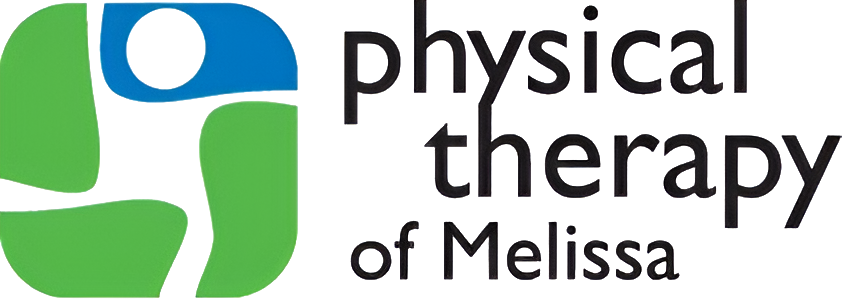
3 Natural Ways To Relieve Stiff and Achy Joints
Help to relieve stiff and achy joints Is Closer Than You Might Realize!
Sometimes we wake up in the morning feeling stiff and achy. We wonder, “Did I sleep on my neck wrong? Do I need to replace my mattress?” It’s only normal that from time to time we feel a little off upon getting our day started! However, if you find that you’re consistently waking up in pain, it could be time for a trip to a physical therapist. Relieve stiff and achy joints by contacting our office today!
Aching, stiff joints could be an easily fixed issue, but in some cases, your physician might diagnose you with a condition that requires a referral to a physical therapist for further treatment. Our clinic has worked with tons of patients dealing with aches and pains in their joints, so contact us today to learn more. We’re 100% committed to helping you enjoy a better quality of life!
Trying to Relieve Stiff and Achy In The Morning?
Throughout the day, your joint tissues become irritated. By the time you’re tired and ready to go to bed, there’s a good chance you won’t even notice it. For the most part, when you fall asleep, you remain immobile overnight. This allows the inflammation to grow thicker joints become even more irritated.
The result? You wake up in the morning and find that your joints are stiff and achy. How uncomfortable! After you start moving around though, usually the inflammation becomes more fluid-like and the pain will lessen or subside altogether.
Your physical therapist is likely to recommend a pretty common remedy for this, which is that you stay properly hydrated throughout the day. Drinking enough fluids and staying hydrated allows your body’s tissues to function at their normal rate, whereas dehydration slows down your chemical processes and has the opposite effect!
But What If I Have A More Serious Medical Condition?
Sometimes it’s not as simple as consuming enough fluids throughout the day to ease your aching joints. If your doctor has diagnosed you with a more serious medical condition that impacts your joints and tissues, physical therapy can be a great option for ultimate pain relief or elimination. Here are some of the most common ailments that can be relieved with the guidance of a physical therapist:
- Lupus.
- Bursitis.
- Gout.
- Rheumatoid arthritis.
- Osteoarthritis.
Unfortunately, all of these conditions can cause aching, stiffness, and joint pain. A physical therapist will work with you to help you gain your strength back, achieve a greater range of motion with the affected joints or limbs, and relieve the pain so you can enjoy a better quality of life.
3 Natural Ways To Relieve Stiff and Achy Joints
Your physical therapy treatment plan will largely depend on the specific symptoms or diagnosis you have received. There are several recommendations that work hand-in-hand with physical therapy.
Here are some tips that your physical therapist may share with you on your recovery journey!
- Eat Healthy. According to Healthline, “A plant-based diet provides antioxidants, which can help reduce inflammation by eliminating free radicals from the body.” Having a well-rounded diet is key to relieving joint pain. Be sure to consume lots of brightly colored fruits and vegetables. These healthy foods contain many antioxidants and vitamins, which help to fight the swelling and inflammation that can lead to joint pain. A better diet also helps your body reap more benefits from exercise, and helps you to get better sleep!
- Get Restful Sleep. Sleep can help you stay fit — pretty cool, huh? Getting enough sleep at night creates a circular benefit with physical therapy exercises, because when you get enough sleep, it increases your ability to exercise effectively. When you exercise regularly, it helps you to get better sleep. Better sleep habits and physical exercise are a powerful duo for keeping aches and stiffness away.
- Work On Your Posture. It’s important to get up every half hour for stretches if you work at a job that requires you to stay pretty sedentary all day. Moving around keeps your circulations going, and can help relieve joint pain. Having good posture during the day also helps your joints to function properly. When we slouch or don’t practice good posture, it causes unnecessary strain on parts of the body that shouldn’t be stressed.
Contact Our Physical Therapy Office Today
Some people believe that you have to be a professional athlete or a bodybuilder to work with a physical therapist regularly, but this is far from the truth. Many of the exercises and stretches a physical therapist will teach and recommend are very easy and simple to perform on your own, and they don’t require special tools or equipment. Not to mention, most of our patients are regular people — not Olympic athletes!
If you’re experiencing joint pain, it’s time to put your discomfort to rest. Contact our office today or come see us in Melissa, TX to learn more about how physical therapy can benefit you and relieve your pain. We can schedule a comprehensive exam for you to meet with one of our movement specialists. He or she will be able to assess your condition and create a customized treatment plan suited for your exact needs. So what are you waiting for? Physical therapy to relieve stiff and achy joints a phone call away!
Source:

Avoid these five running mistakes during 5k season
While annual statistics are bleak when it comes to the success rates of New Year’s resolutions, don’t conclude that goalsetting is a fruitless endeavor, says physical therapist. Simply resolve to set smarter goals.
“Setting small, attainable goals throughout the year, instead of a singular, overwhelming goal in January 1, can help you reach whatever it is you strive for,” said Lynn Bufka, PhD, a psychologist with the American Psychological Association (APA). “Remember, it is not the extent of the change that matters, but rather the act of recognizing that lifestyle change is important and working toward it, one step at a time.”
Plenty of Americans seem to recognize that lifestyle change is important, especially this time of year when around 45 percent make resolutions, mostly related to health. According Nielsen ratings, the No. 1 New Year’s resolution in the U.S. last year was to stay fit and healthy (37 percent), with losing weight coming in at a close second (32 percent).
About 64 percent of these resolutions make it past four weeks, however, with an overall success rate of about 8 percent, said the University of Scranton in the Journal of Clinical Psychology.
These stats seem to cast a dim light on the capacity of people to make tangible changes in their lives – but it shouldn’t. The lack of success often begins with the goal itself. An ideal goal, according to experts, should be SMART, an acronym that stands for five specific qualities: specific, measureable, attainable, realistic and trackable.
“When setting goals, think about process and outcome,” states the Mayo Clinic, which advocates setting SMART goals for health-related issues such as exercise, weight loss and healthy eating. “Process goals are most important because changing your habits (processes) is key to success.”
The Mayo Clinic offers the following guidance for setting your own SMART goals:
Specific: Don’t be ambiguous when setting goals. Include all the important W’s in your goal: who, what, where and why. Instead of saying “I’d like to lose weight,” be more specific: “I want to lose 15 pounds by May 1 so I can go hiking without experiencing knee pain.”
Measurable: Always set concrete marks that allow you to measure the progress of your goal. Include your long-term goal, of course, but also include a few benchmarks along the way (e.g., lose 4 lbs. in Jan., 3 lbs in Feb., etc.).
Attainable: Make sure you have the time, resources and ability to achieve your goal. If you’re strapped for cash, don’t make it your goal contingent on joining a gym. Or if running is painful, don’t make it a goal to jog every day.
Realistic: Aim high, but don’t leave the stratosphere of what’s truly possible. Setting unrealistic goals – aiming to run a marathon when you’ve never completed a 5K, for instance – could just set you up for disappointment.
Trackable: Choose goals that allow for tangible ways to track progress, be it through weight lost per week, calories eaten per day, miles run on the treadmill, etc. Like in a sport, keeping score keeps you focused and motivated.
And of course, before beginning any new exercise regimen or weight-loss program, consult your physician or a certified physical therapist.
“Lasting lifestyle and behavior changes don’t happen overnight,” said Katherine C. Nordal, PhD, executive director for the professional practices of the APA. “Willpower is a learned skill, not an inherent trait. We all have the capacity to develop skills to make changes last.”
SOURCES:
Mayo Clinic: Be SMART about weight loss
http://www.mayoclinic.org/healthy-lifestyle/weight-loss/in-depth/health-tip/art-20049218
APA: Americans Report Willpower and Stress as Key Obstacles to Meeting Health-Related Resolutions
http://www.apa.org/news/press/releases/2010/03/lifestyle-changes.aspx
APA: Making your New Year’s Resolutions stick
http://www.apa.org/helpcenter/resolution.aspx
Statistic Brain Research Institute: New Year’s Resolution Statistics
http://www.statisticbrain.com/new-years-resolution-statistics/
Medical News Today: Training Yourself To Have More Willpower
http://www.medicalnewstoday.com/releases/255433.php
